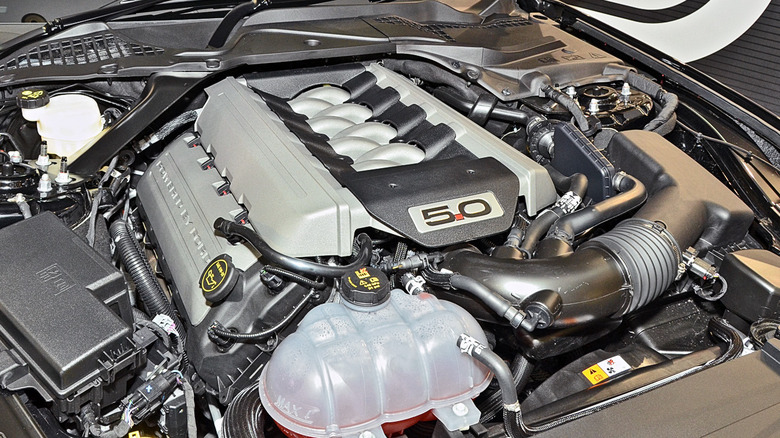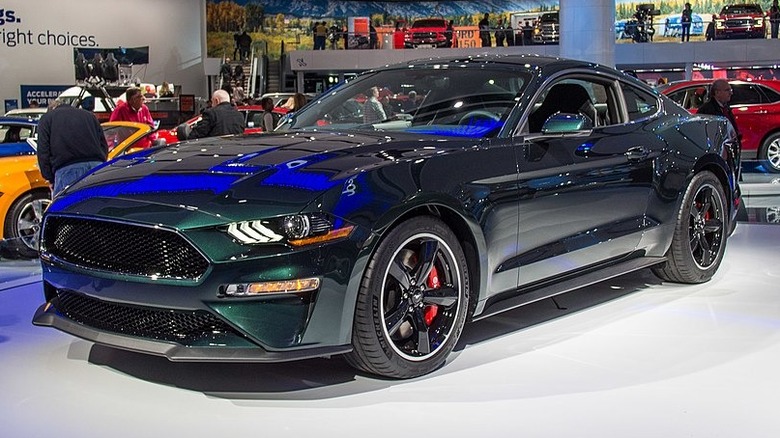
Malchick743 (ALJMW)/Wikimedia
There are many ways to categorize engines. What differentiates an inline-6 engine from a V6 engine if they have the same number of cylinders? What is the difference between a big block and a small block engine? There’s a lot more that goes into engine design you can distinguish them by. One of those ways has to do with the engine’s crankshaft. Without a crankshaft, the engine would not be able to take the energy created by the engine’s combustion chamber and transform it into motion that allows the wheels on your car to spin. One might assume that there is only one way for an engine’s crankshaft to work, but that is not the case.
Advertisement
In actuality, there are two different crankshafts: flat-plane and cross-plane cranks. No matter what kind of engine you are looking at, be it a V8 or an I4, you will be dealing with one of these crank designs. Although the goal of these two is nominally the same, the differing designs make them ideal for certain situations. Let’s break down what exactly makes each of these cranks unique, examining the pros and cons of each crank, and maybe we will see why one has become so much more popular.
[Featured image by Malchick743 (ALJMW) via Wikimedia Commons | Cropped and scaled | CC BY-SA 4.0]
What is a cross-plane crank?

F.D. Richards/Wikimedia
Let’s start with the more common design, a cross-plane crank. What determines the difference between the two designs is the arrangement of the crank pins. A crank pin is what connects the crankshaft to the connecting rod, which is what is connected to the engine’s pistons. In the case of a cross-plane crank, these crank pins are arranged at 90-degree intervals, where two different planes intersect perpendicularly. If you are looking down at them, they will create a cruciform, meaning it looks like an X or a plus symbol.
Advertisement
This is the kind of crank you are likely to find in the majority of American-made V8 engines, along with many other engine types as well. The main reason for this is that it provides a more balanced driving experience. The force created by the crank pins is being offset in every direction, allowing for a smoother feel. This balance is also achieved by using counterweights, which in turn make the engine much heavier. You’ll get a much quieter engine as a result. A drawback to this type of configuration is that you are likely going to have your vehicle’s speed be capped thanks to that balanced feel, though it does help out with low-end torque. That extra weight also means that a cross-plane crank makes your engine less fuel efficient.
Advertisement
[Featured image by F.D. Richards via Wikimedia Commons | Cropped and scaled | CC BY-SA 2.0]
What is a flat-plane crank?

Tuner tom/Wikimedia
If a cross-plane crank has its crank pins on two planes intersecting perpendicularly, then it would make sense that a flat-plane crank would be the opposite. With engines that use this configuration, the crank pins instead are all aligned and are on a single, 180-degree plane that is essentially just a straight line. Because of this design difference, many of the weaknesses of the cross-plane crank are completely nullified with the flat-plane configuration. The counterweights that provide that smoother drive are eliminated, as the forces here naturally offset one another. This means that these engines can be a lot lighter than ones with cross-plane engines, and consequently, they are able to reach much higher speeds, and more quickly. Because of this, flat-plane cranks are much more common in vehicles using V8 engines designed for racing than what you’d see everyday on the street, although inline-four engines also use this configuration for the most part.
Advertisement
As a result of these positives, it comes with plenty of negatives as well. That lack of weight is nice, but it eliminates that smooth drive feel. There isn’t anything to counteract those secondary vibrations. It also means that this engine style is extremely loud. Ultimately, a flat-plane crank isn’t all that practical for every day, normal driving with larger engines, which is why cross-plane cranks are much more prevalent despite their faults. That being said, each one has their place and are perfect for certain situations.
[Featured image by Tuner tom via Wikimedia Commons | Cropped and scaled | CC BY-SA 4.0]